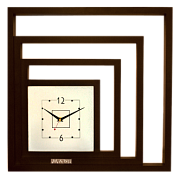Tea ceremony
The Japanese tea ceremony, also called the Way of Tea, is a Japanese cultural activity involving the ceremonial preparation and presentation of matcha, powdered green tea. In Japanese, it is called Chanoyu (茶の湯) or sadō (茶道). The art of its performance, is called otemae (お手前; お点前).
Nowadays, the tea ceremony is a relatively popular hobby. Many Japanese, who are interested in their own culture, take tea ceremony lessons.
Tea ceremonies are held in traditional Japanese rooms in cultural community centres or private houses. Preparing tea in this ceremony means pouring all one's attention into the predefined movements.
The ceremony itself consists of many rituals that have to be learned by heart. Almost each hand movement is prescribed.
Basically, the tea is first prepared by the host, and then drunk by the guests. The host spends days going over every detail to make sure that the ceremony will be perfect.
There are various styles of tea ceremonies and it is recognized that every human encounter is a singular occasion that will never recur again in exactly the same way, and so every aspect of the tea ceremony is savored.
The ceremony takes place in a room called the chashitsu. This room is designed and designated only for this ceremony. The room is usually within a teahouse, and is located away from the residence in the garden.
When tea is more than a drink and the tea ceremony is understood and practiced to foster harmony in humanity, promote harmony with nature, discipline the mind, quiet the heart, and attain the purity of enlightenment, the art of tea becomes teaism.




